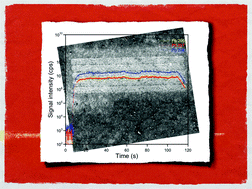In this paper, the general capabilities of laser ablation-single-collector-inductively coupled plasma-mass spectrometry (LA-SC-ICP-MS) for isotope ratio determination are discussed. Some new approaches for improving the quality of the results have been investigated, and the results are presented here and compared with previously published data. In this way, an attempt is made to promote the use of this accessible technique in those contexts for which it is fit-for-purpose. Starting from a general exposition of the main factors affecting the combined uncertainty for isotopic analysis when using this technique, some general hints for method development are given and some methodological approaches permitting the results to be improved presented. In this regard, proper selection of the type of mass spectrometer, of the ICP-MS acquisition parameters, and of the detection mode used (i.e. pulse counting or analog mode) are first discussed. Secondly, different methodological approaches for stabilizing the LA-ICP-MS signal and/or filtering out large particles that would not be properly digested in the plasma are presented and critically compared in terms of precision improvement and the effect they exert on the observed mass discrimination. The use of Ne in a collision/reaction cell leads to precision improvement due to the so-called collisional damping effect, but, at a cost of strongly matrix-dependent mass discrimination. The insertion of a dual-pass spray chamber in-between the LA system and the ICP torch with simultaneous admixture of (i) a nebulized aerosol or (ii) a flow of N2 leads to improved precision while providing more robust plasma conditions, reducing the matrix-dependence of the mass discrimination effect. After evaluation of the results presented, some general hints for achieving optimal isotopic data by means of LA-SC-ICP-MS are summarized in the conclusions section. These recommended conditions provide considerable improvements with respect to the typical precision values reported for this technique (e.g., ∼0.1% RSD external precision for glass samples), such that valuable information can be obtained in many application fields.

You have access to this article
 Please wait while we load your content...
Something went wrong. Try again?
Please wait while we load your content...
Something went wrong. Try again?


 Please wait while we load your content...
Please wait while we load your content...